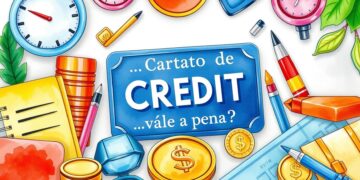The importance of financial education in schools: preparing the next generation

Understanding Financial Literacy
In today’s rapidly changing world, financial literacy is no longer a luxury; it is a necessity. As young individuals prepare to navigate life’s financial challenges, the importance of teaching them the fundamentals of money management cannot be overstated. A strong foundation in financial education can empower the next generation to make informed decisions and build a secure future.
The Importance of Financial Education
Consider the following critical reasons why financial education in schools is essential:
- Developing Essential Skills: Financial literacy equips students with necessary money management skills. They learn how to budget effectively by understanding the difference between wants and needs, setting spending limits, and planning for future expenses. For example, a student might learn to track monthly income from a part-time job, allowing them to allocate funds towards savings for college or a new car. Additionally, knowledge of investments introduces the idea of compound interest, teaching them how their money can work for them over time.
- Promoting Financial Wellness: In a society where student loan debt and credit card overspending are rampant, providing young adults with tools to manage debt and avoid financial pitfalls is crucial. Financial education can help them understand the consequences of interest rates and credit scores, ultimately enabling them to make responsible borrowing decisions. For instance, knowing how to responsibly use credit cards can prevent them from falling into cycles of debt that can affect their financial future.
- Fostering Economic Understanding: A deeper grasp of personal finance translates to better citizens who contribute positively to the economy. By learning how their financial choices impact not just themselves but their communities, students can appreciate the value of investing in local businesses, saving for significant purchases, and giving back through charitable donations. This understanding fosters a culture of responsibility and empowerment within their communities.
The Path Forward
By prioritizing financial education, we address critical issues like student debt and inadequate savings. Schools that introduce courses in personal finance witness not only improved financial behaviors among students but also an increase in overall confidence in managing their finances. Studies show that individuals who undergo financial education are more likely to save and invest wisely, enhancing their financial resilience and paving the way for a brighter future.
As educators, parents, and community members, we have a responsibility to pave the way for the next generation. Together, we can champion the inclusion of financial education in our schools, enabling our youth to develop a healthy relationship with money. Let’s inspire conscious and responsible financial actions, ensuring that our young people are prepared to thrive, not just survive, in the ever-evolving financial landscape of the United States.
CHECK OUT: Click here to explore more
The Importance of Financial Literacy in Today’s World
In an era of increasing financial complexity, the need for solid financial education has never been more critical. As young individuals navigate through life, the ability to make informed financial decisions greatly influences their present circumstances and future opportunities. When schools incorporate financial literacy into their curricula, they are not simply teaching students about money; they are equipping them with essential life skills that can profoundly impact their autonomy, security, and aspirations.
- Encouraging Smart Financial Habits: Establishing a firm grasp of financial principles encourages students to develop smart financial habits early in life. By introducing topics like budgeting, students learn how to allocate their resources wisely. An engaging example would include the “50/30/20 rule,” which suggests spending 50% of their income on needs, 30% on wants, and saving or investing the remaining 20%. This structured approach can help create stability and security, ultimately fostering a sense of responsibility toward their finances. Additionally, understanding the significance of saving for emergencies, such as unexpected car repairs or sudden medical expenses, reinforces the idea of preparing for life’s unpredictabilities, resulting in increased confidence during critical times.
- Understanding Real-World Financial Challenges: The challenges facing today’s youth are vast and intricate, ranging from soaring college tuition fees to burdensome student loans and rising living costs. A robust personal finance education allows students to navigate these waters with greater ease. For instance, by learning about interest rates associated with loans, students can better understand how repayment impacts their long-term financial health. Furthermore, exploring rental agreements educates them on the responsibilities of being a tenant and what to look out for in leases, thus empowering them to make informed housing decisions in the future. Broaching retirement planning, even at a young age, plants the seed for long-term thinking, encouraging them to consider options like 401(k)s or IRAs, thus securing their financial future effectively.
- Encouraging Entrepreneurship: One of the most inspiring aspects of financial education is its potential to ignite entrepreneurial interests among students. By teaching them how to draft a business plan or create a budget for a startup, they begin to see the possibility of pursuing their passions economically. Take, for example, a group of high school students who start a lemonade stand. By learning about sourcing materials, pricing their goods, and saving their profits, they experience firsthand the rewards and responsibilities of entrepreneurship. This process not only fosters innovation but also instills a sense of community involvement, allowing students to contribute positively to their local economies.
To effectively teach financial concepts, educators should embrace interactive and engaging methods. Utilizing real-world examples and hands-on activities, such as setting up simulations for managing personal budgets, can create relevance and excitement around financial subjects. Furthermore, initiating discussions surrounding financial experiences promotes a collaborative learning environment where students feel empowered to share and learn from one another.
Ultimately, cultivating a generation skilled in financial literacy holds immense potential for a brighter, more secure future. It is an investment that transcends individual gain; it fosters community strength and advances economic stability. By advocating for and implementing financial education in schools, we empower our youth to navigate their financial landscapes with confidence and resilience. Together, let’s champion the growth of financial literacy, creating pathways to promising futures rich with opportunity and possibility.
SEE ALSO: Click here to read another article
Empowering Students to Make Informed Choices
Financial education goes beyond basic math lessons; it is about empowering students to make informed financial choices that can drastically change their lives. One of the hallmarks of effective financial literacy programs is their emphasis on critical thinking. Students learn to assess financial products, like credit cards and loans, through a critical lens, allowing them to discern what is truly beneficial versus what may be misleading or detrimental. For instance, understanding the fine print on credit card offers equips students to navigate potential high-interest rates and hidden fees. This critical approach to financial decision-making ensures that students don’t fall prey to predatory lending practices, saving them from potential financial distress in the future.
- Building Confidence in Financial Decision-Making: A financially literate student feels empowered to make informed decisions about their money, which significantly impacts their overall well-being. Engaging presentations about personal finance can be coupled with practical exercises, such as calculating the total cost of a loan over time, illustrating the importance of comparing different loan options. Such knowledge provides students with the confidence to seek the best financial solutions tailored to their needs, eliminating uncertainties that might otherwise hinder their financial independence.
- Equipping Students with Tools for Success: Financial education provides invaluable tools that extend far beyond the classroom. By introducing budgeting software or apps, schools can prepare students for real-world applications. These resources can help track spending and savings goals, making it easier for students to manage their finances in a digital economy. Additionally, mastering online platforms for investing or understanding cryptocurrency prepares students for rapidly evolving financial landscapes. This tech-savvy approach to finance illustrates how students can effectively respond to modern economic demands, enhancing their adaptability and potential for success.
- Fostering a Culture of Financial Wellness: When schools prioritize financial education, they foster a culture of financial wellness that benefits not just individual students but entire communities. As young individuals become more financially savvy, they are more likely to contribute positively to their neighborhoods. Community workshops and partnerships can emerge from schools that implement these lessons, creating even more opportunities for families to gain financial knowledge together. This collective growth strengthens the economic resilience of communities, creating a ripple effect that uplifts everyone involved.
Moreover, it’s essential that schools embrace diversity in financial education by addressing the varied backgrounds and financial situations of students. Tailoring financial literacy efforts to reflect real-life scenarios that students may face—such as understanding credit scores, managing diverse incomes, or navigating public assistance programs—ensures that all students feel seen and equipped. This inclusivity sow seeds of hope and ambition, encouraging them to aspire to better financial futures regardless of their starting points.
Ultimately, as schools prioritize financial education, they craft an environment where young individuals can thrive, become self-sufficient, and break intergenerational cycles of financial struggle. This collective effort not only leads to individual growth but also contributes to the well-being of society at large by reducing dependence on social safety nets and fostering a more vibrant economy. As we continue to recognize the importance of financial literacy for our youth, let’s commit to championing these essential skills in education, forging paths toward brighter and more secure futures.
SEE ALSO: Click here to read another article
Conclusion
In closing, the integration of financial education in schools stands as a fundamental pillar in preparing our youth for a successful future. As we have seen, equipping students with essential financial knowledge not only fosters their ability to make informed decisions but also cultivates a sense of empowerment and confidence. This empowerment enables them to navigate complex financial landscapes and make choices that significantly impact their lives.
When schools embrace financial literacy, they create a supportive ecosystem that encourages students to learn the value of budgeting, saving, and investing. By incorporating practical tools and real-life scenarios into the curriculum, we can motivate a generation to engage with their financial futures actively. As these students become financially savvy adults, they contribute to stronger communities, promoting economic resilience and reducing dependence on assistance programs.
Furthermore, acknowledging and respecting the diverse backgrounds of students ensures that all voices are heard, paving the way for equitable financial opportunities. By committing to meaningful financial education, we can not only change the trajectory of individual lives but also create a culture of financial wellness within our society. This collective investment in our youth will undoubtedly lead to a brighter and more secure future for all.
Let us take a firm stand in advocating for the inclusion of financial literacy in our schools, inspiring the next generation to be proactive, responsible, and resilient in their financial pursuits. Together, we can forge pathways that will lead to empowered individuals and thriving communities.

Linda Carter is a writer and financial expert specializing in personal finance and financial planning. With extensive experience helping individuals achieve financial stability and make informed decisions, Linda shares her knowledge on the Take Care Garden platform. Her goal is to empower readers with practical advice and strategies for financial success.






